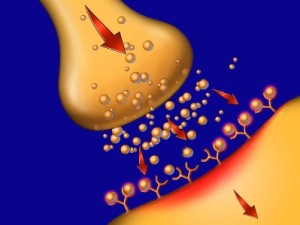No self-diagnosing your whiplash!!
It took many years and several scientific studies to prove to the public that whiplash injuries are real at low-speeds– speeds as low as 10mph. Where medicine seems to be lacking now, is in the ability to teach the public the importance of proper evaluation by a trained professional. Too often, persons involved in car crashes are self-diagnosing. This leads to a delay in treatment and worsening prognosis. Today, I want to talk about a very real concern, chronic nerve pain following trauma.
The damage done to the neck during a whiplash event is pretty significant. There is injury to the discs, ligaments, and joint capsule. Those injuries occur within 300 milliseconds (which is less time than it takes to blink). One injury that is often overlooked is the damage done to the nerve tissue. There are long term injuries to the spinal nerves. These injuries can create chronic pain. The pain which is being felt is generated by the brain and the nerve, not the tissues. The tissues tend to be relatively healthy, even with some scar tissue.
Generally, the tissue damage from a whiplash injury ought to heal in 8 weeks. But when a person does not seek proper early treatment, there is increased stress and pressure on the spinal nerves and they undergo something called “neuroplastic allodynia.” Essentially, the nerves become hypersensitive. A hypersensitive nerve can fire pain signals to the brain even when there is no painful stimulus. This condition can persist for years following the accident. It is very difficult to treat and can lead to chronic pain related depression, and even suicidal idealization.

Nerves transmit signals to the brain using chemical messengers. In chronic pain, these messengers flood the brain with signals.
Yoram Shir, MD, & John X. Pereira, MD, from The Pain Centre, Montreal General Hospital, McGill University. Wrote about this subject in the Journal of Rheumatology. They describe the condition this way: “Continued chronic pain is likely related to neuroplastic changes occurring within the central nervous system. Animal studies have demonstrated neuronal hyperexcitability resulting in an exaggerated pain response following peripheral nerve injuries. Pain may also be persistent in the absence of ongoing nociceptive stimuli. Similarities in neurophysiological mechanisms may be used to explain ongoing pain in both FM and WLI. Neuronal hyperexcitability has been demonstrated by the presence of abnormal wind-up in FM and exaggerated muscular hyperalgesia in WL. Objective documentation of spinal cord hypersensitivity using the nociceptive withdrawal reflex provides compelling evidence of neurophysiologic similarity between these 2 conditions. Other mechanistic similarities between both conditions include sympathetic hyperactivity and elevation of inflammatory cytokines. These findings support the hypothesis of neuroplastic changes as a factor in perpetuation of pain and add credence to the concept of neuronal excitability causing an exaggerated pain response in the absence of ongoing measurable tissue damage.”
I really appreciate their explanation. One of the theories behind the chronic pain deals with chemical changes on the surface of the nerves. The chemical changes have been thoroughly studied and the principal agent appears to be Prostiglandin-E2. These changes cause the nerves to fire prematurely. Imagine a hair-trigger on your pain nerves; even the slightest pressure causes the nerve to fire.
There are ways to positively influence the chemical processes to reduce the chronic pain and help the injured nerves to fire correctly. If you are suffering from pain 2 or 3 months after an injury, you might be experiencing this type of chronic pain and you should be evaluated by a chiropractic physician who has a special interest and training in chronic pain. Our office is happy to visit with you. Call and schedule your appointment today.
Innova Pain Clinic
St George Utah Chronic Pain Chiropractic Physician



